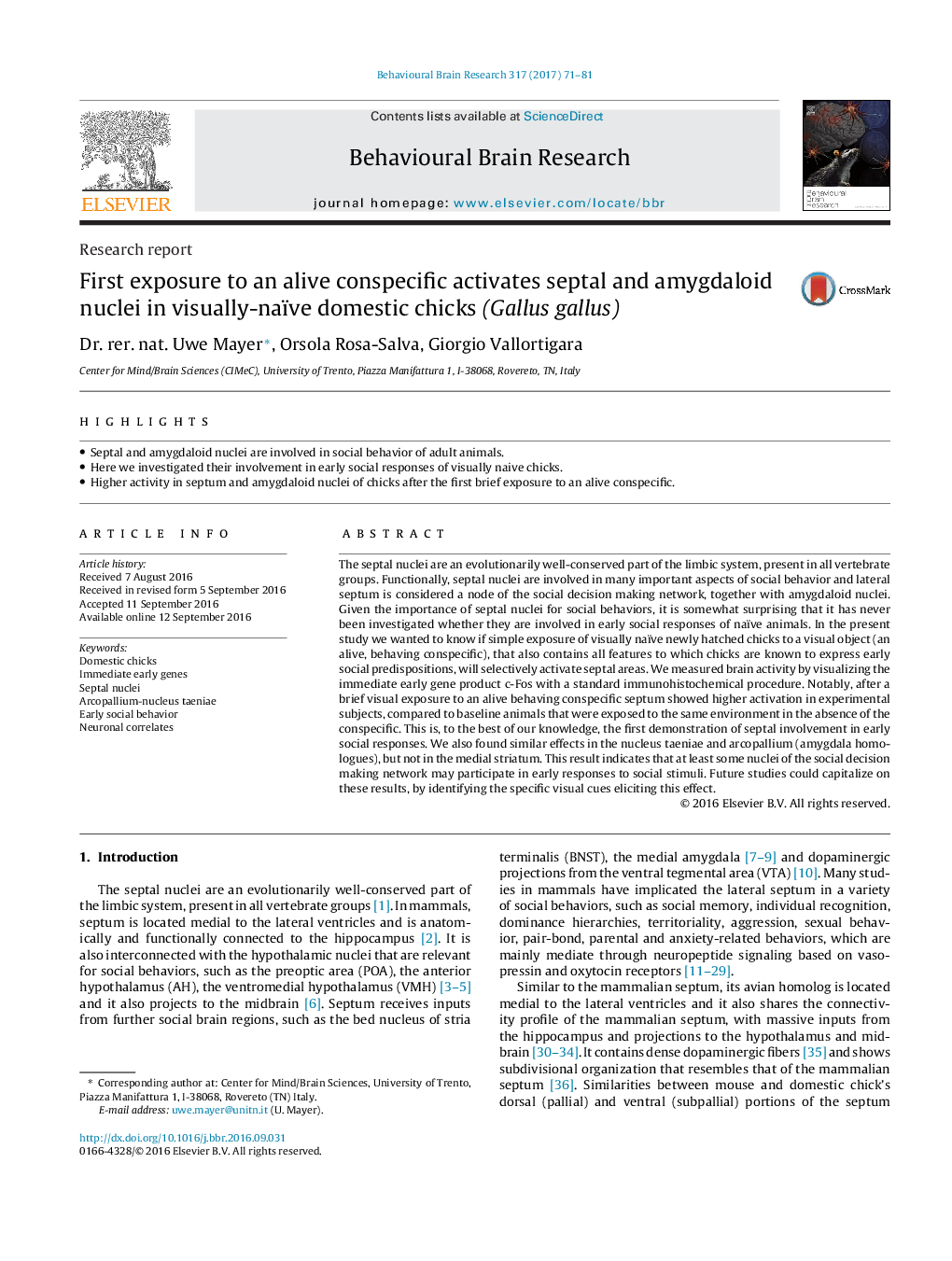| Article ID | Journal | Published Year | Pages | File Type |
|---|---|---|---|---|
| 4311949 | Behavioural Brain Research | 2017 | 11 Pages |
•Septal and amygdaloid nuclei are involved in social behavior of adult animals.•Here we investigated their involvement in early social responses of visually naive chicks.•Higher activity in septum and amygdaloid nuclei of chicks after the first brief exposure to an alive conspecific.
The septal nuclei are an evolutionarily well-conserved part of the limbic system, present in all vertebrate groups. Functionally, septal nuclei are involved in many important aspects of social behavior and lateral septum is considered a node of the social decision making network, together with amygdaloid nuclei. Given the importance of septal nuclei for social behaviors, it is somewhat surprising that it has never been investigated whether they are involved in early social responses of naïve animals. In the present study we wanted to know if simple exposure of visually naïve newly hatched chicks to a visual object (an alive, behaving conspecific), that also contains all features to which chicks are known to express early social predispositions, will selectively activate septal areas. We measured brain activity by visualizing the immediate early gene product c-Fos with a standard immunohistochemical procedure. Notably, after a brief visual exposure to an alive behaving conspecific septum showed higher activation in experimental subjects, compared to baseline animals that were exposed to the same environment in the absence of the conspecific. This is, to the best of our knowledge, the first demonstration of septal involvement in early social responses. We also found similar effects in the nucleus taeniae and arcopallium (amygdala homologues), but not in the medial striatum. This result indicates that at least some nuclei of the social decision making network may participate in early responses to social stimuli. Future studies could capitalize on these results, by identifying the specific visual cues eliciting this effect.
